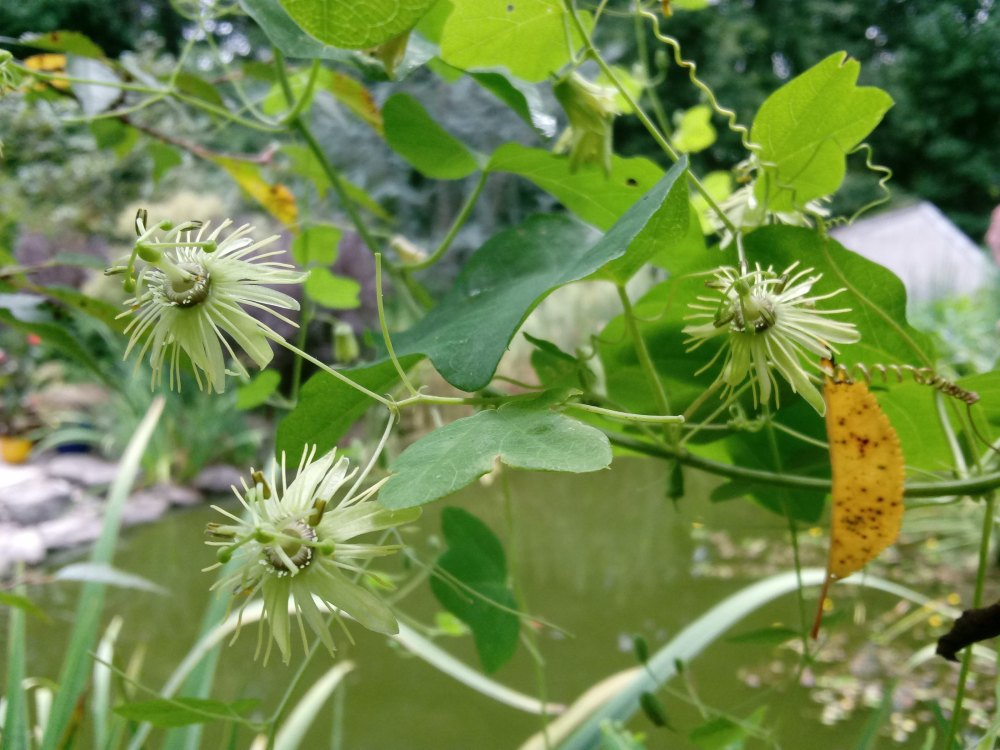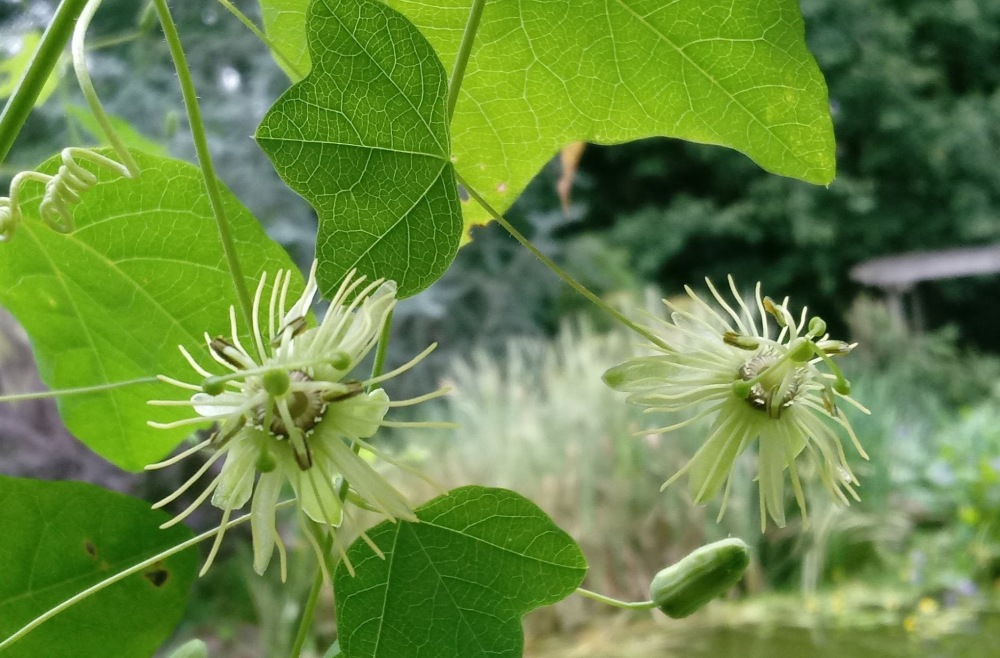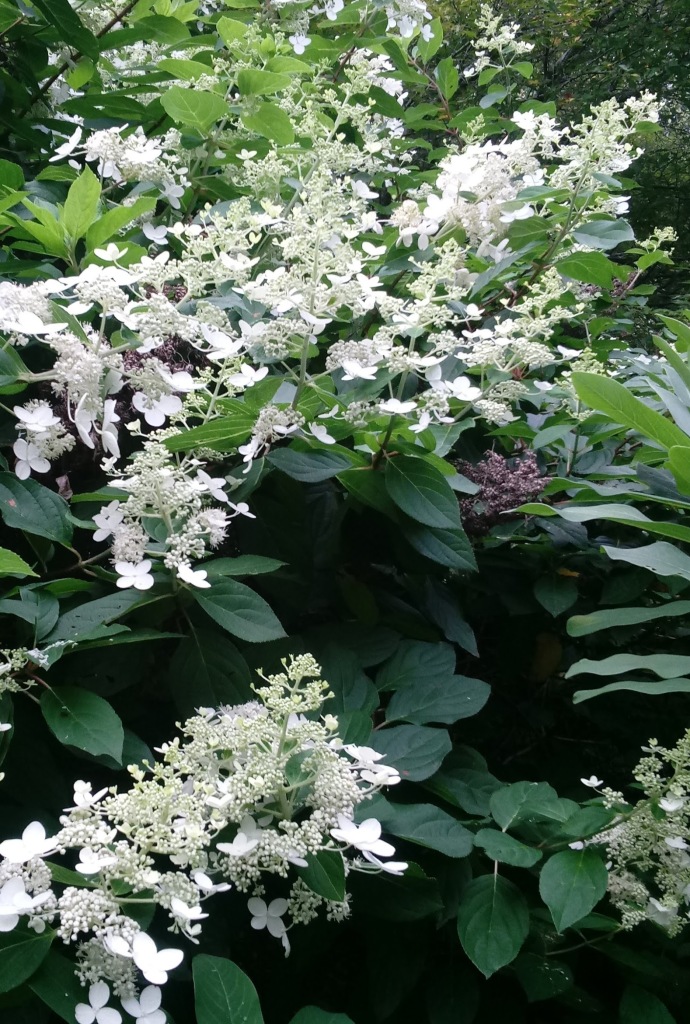Happily, I admit to prematurely reporting the demise of two passionflower vines, which appeared shortly after publishing my sob story, though the long term fate of one remains in doubt. Passionflower vines are known for late arrivals after extended winters, and this year there was no sign of the purple flowered vine (Passiflora incarnata) into June. Clearly, its chance for recovery is tenuous, with growth only a few inches tall when typically it would have flowered and climbed ten feet or more by mid August.
The yellow flowered vine (Passiflora lutea) was not seen earlier because I wasn’t looking, after the vine was not seen at all a year ago. Questionable placement planted the yellow passionflower behind the waterfall of the koi pond, sandwiched between wide spreading Oakleaf and ‘Tardiva’ hydrangeas (and others, best described at this point as brush). The idea was for the vine to climb through the hydrangeas, and into an overhanging ‘Okame’ cherry, which it did splendidly for several years, though the flowers are too small to be seen from a distance. Then, there was nothing a year ago, and dense growth discouraged a closer search. So, the assumption was made and reported that the vine had perished.
I am wrong consistently enough that reporting this is rather dull and unsurprising, but still I was surprised to see the vine while attempting to clear out some of the clutter beneath the cherry several weeks ago. Seedlings of ‘Tardiva’ and beautyberries (Callicarpa) have further crowded this untidy mess, but the yellow flowered vine has climbed through the tangled branches. Evidently, it was somewhere in there a year ago, but whatever happened so that it stayed beneath the canopy of foliage. In any case, I’m happy to see it back, though I remain tempted to plant another where flowers can be more easily seen.
Years ago, long before the koi pond was given a thought, and when mid and late summer flowering hydrangeas were hardly considered, ‘Tardiva’ (Hydrangea paniculata ‘Tardiva’) was planted along the sunny northwestern property line. After nearly three decades the border is no longer sunny, due to tall growing cherries, dogwoods, katsura, beech (a magnificent green leafed monster with pendulous branching), hollies, and cryptomerias. But with only a mid afternoon glimpse of sunlight, ‘Tardiva’ has grown and flowered splendidly. Also, it has scattered seedlings in close proximity that must be weeded out since they will always grow too large for the random spots where they sprout.
Is ‘Tardiva’ the equal of ‘Limelight’, ‘Phantom’, ‘White Wedding’, or a dozen other newer introductions? Almost certainly not, but there is not a bad choice in the bunch.
Dear Dave, the last post was hardly a “sob story”. Haha! 😀. Wonderful blog and pictures as always! Thank you! 😀
I suppose that it is the gardener’s nature to worry. I try not to fret over every little problem, and sometimes even disasters can work for the best.
You are pleased that they survived? I wish ours would die! . . . peacefully, of course. I have not been able to get rid of it. I might like it more if it were something unusual like Passiflora lutea, but it is the common Passiflora incarnata that has been there forever. Many years ago, I thought I could kill it just by pulling the vines up as the developed. It just came up somewhere else. I sometimes leave it if it is not too aggressive, but that only give it time to recharge to survive through winter and come back again more aggressively in spring. Sometimes I think that it would be easier to get rid of a few other things to make space for it, and then just pretend that I like it.
I’ve culled unmanageable vines Chinese wisteria and akebia from the garden, but our winters keep passionflowers in check. In fact, this garden is encouraged to run wild, but not too wild.